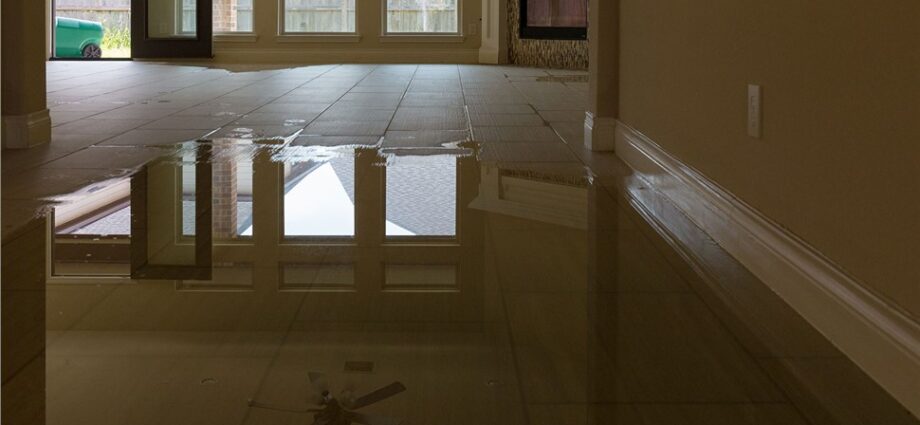Have you just found a new home, moved in and seen some signs of water leakage? Or have you recently come back from holiday to find a bad smell in your home?
Knowing how to detect water damage in your home is a great skill to have. It’s a much more serious problem than many people realize and can lead to a wide range of health issues including respiratory issues, allergic reactions and more, and this is in addition to the structural damage to your home.
But how do you know if there’s been any water damage? And if you manage to find out, what do you do, call water damage restoration services or fix it yourself? It’s hard to make these large decisions, so this article hopes to give you all the information you need about water damage and how to fix it.
How To Spot Water Damage
Keep an eye out, if you see any of these issues in your home, it may be water damage!
Water Stains In The House
One of the most common signs of water damage is staining caused by water. They’re easy to spot and come across as yellow-tinted water rings that form on walls, ceilings and floors.
Bloated Drywall
Sometimes, drywall can absorb excess moisture, which causes it to bubble up and be swollen. Keep an eye on any drywall irregularities you might see.
Rotting Wood
Keep an eye out for rotting wood as well. Make sure that wooden furniture, fixtures and more are in good condition as constant wetness destroys wood.
A Bad Smell
If you can smell excess humidity or mould, it’s a sign of water damage. It has a strong smell of a damp dog mixed with rotten eggs. If you ever go to a house inspection, keep your nose tuned for bad smells.
The Sound of Leaks
If you can hear water dripping around the house, there’s likely to have been a leak. This can be the early stages of water damage or even the leaking of accumulated water somewhere.
Paint Peeling or Chipping
Paint suffers when there is too much humidity or in the event of water damage. If the paint in your home looks discoloured, peeling or chipping, that can be a sign of water damage.
Mould Growth
Mould is so off-putting, but it truly is a sign of something worse. Either you have poor ventilation in a space with too high humidity or there has been significant water damage. Mould is also a significant health hazard, so call the nearest mould restoration in the USA and get on top of the problem quickly.
Damp Walls
A property with high moisture within will never feel completely dry. So place your hands on the walls and see if they’re damp. This is a sure sign of water somewhere it shouldn’t be.
Large Cracks
Cracks on ceilings, walls and floors happen for a lot of reasons. The most common is that houses, especially second floors move. But if a crack is larger than normal, it can be caused by water damage.
Roof Damage
If water is pooling on the top of the house, you can tell by looking at the roof. Water damage can be caused if there are roof cracks, missing shingles or broken roof tiles. Water runs, so it’s hard to know exactly where it’s coming from, so keep an eye out.
Rusty Metals
Water makes metals rust. So, if you want to know if there’s been water damage in your property, take a look at the metals, if they’re rusty, there’s been some water sitting on the metal for too long without drying naturally.
Bad Attic and Basement Maintenance
Your attic and basement are usually affected first if there’s a water leak. So take a look at these spaces periodically and check for any damage, so you can catch it before it spreads.
Lose Caulk Near Pipes
Take a look for loose caulk near pipes, this is common in kitchens, laundries and bathrooms, as water seepage loosens caulk over time. Bad plumbing also can cause water leaks, so while you’re in it, take a good look.
A Bad Exterior
If you see puddles around your property’s exterior, or you can see some sloping in the ground near your property, this is a sure sign that water runoff is not being effectively moved to drains. Outdoor drainage is important so keep an eye on it.
What To Do About Water Damage
1. Inspect for Serious Issues like Mold
Mould and mildew can be found in water-damaged materials. For long-term issues such as water damage in the attic, the mould may have grown a long time ago, so you can’t be sure how long it’s been there
Additionally, be careful if you see any mould issues, mold is both harmful to what it’s infested in and toxic to humans. To correctly remove mold you should cut the material away, discard it and replace it. If it’s bad, calling professionals will be a wise idea, as mould can recur over time.
2. Dry Out the Area
It is important to remove all moisture as soon as possible to prevent ongoing damage. This can be hard if the leak is larger, but you can use fans to move air around an affected area, and you can even rent out a large dehumidifier for larger projects where you need carpet, wood and other materials to dry faster.
3. Remove Porous Damaged Materials
Carpet, insulation, fabric, and other similar items are examples of porous materials that should be removed and discarded when there’s been water damage. You might have to cut them out and throw them away if they’ve been soaked in water. This is because porous materials can be permanently warped or shrink due to water and mildew. If you care about certain furniture, you may be able to dry it before damage happens, but it’s difficult. Keep in mind that wood, drywall and unsealed cement are also porous materials, but degrade slower.
4. Disinfect Other Materials
After damaged components have been removed disinfect the entire area before you begin. The most common choice I bleach, but there are other options on the market. Make sure to wear gloves and a mask as these cleaning chemicals are harsh.
5. Focus on Ceilings Water Damage First
Ceilings that have been damaged by water are more vulnerable. You don’t want them to fall apart or sag, after all, gravity is not on your side. Remove the affected ceiling boards or panels first. If a problem with the roof is the source of the ceiling leak, it is important to find the source, which can be away from the water stain you find. Also, take this time to make sure that neither the rafters nor the beams were damaged by the water. In the case of bad damage, you may need to speak to the experts.
6. Replace Damaged Wood
All wood that is severely warped, rotting, or has mould or mildew issues must be replaced. This is most commonly flooring. Before replacing the damaged boards, pry them apart and thoroughly clean them underneath. Additionally, if the wood in your home is a structural component, you have to be careful to ensure that the structure has adequate support throughout and after this project.
7. Install New Floors
If your floor has been affected, you can often tell immediately by seeing wet carpets and swollen floorboards, but if you aren’t sure, take a look under the floor to see if moisture has accumulated. Keep in mind that padding and underlays are often not waterproof and will need to be removed. But this is a great opportunity to replace them with waterproof options. There are options like high-end vinyl, ceramic tile and certain wood materials that can prevent water damage in the future.
8. Replace Drywall
It’s hard to know how much drywall to replace if it’s been damaged by water. The general rule is that you need to replace the entire sheet of drywall if it has moved 3/8 of an inch or more from the base. If not you can remove just the damaged section, but don’t forget to take a look at any insulation in the walls for any signs of damage while you’re at it.
9. Inspect and Replace Siding Outside
Ice and other roof problems can damage roof siding. The biggest issue is that water can seep in behind the siding and cause permanent damage, so if this has happened to you, it’s vital to remove the siding before the rot begins.
10. Caulk and Paint as Needed
Now that things have been replaced, it’s time to touch up and repaint things and caulk new materials as required.
11. Call The Experts
If all of this work sounds daunting to you, or you just aren’t great with the tools, it can be more cost-effective to call the experts at Flood Pro USA, and they can give you peace of mind faster.

